Industry On The Farm
Agriculture
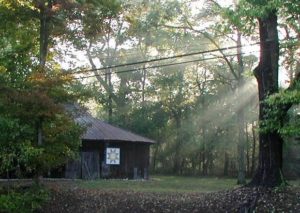
Tobacco barn across the street from main house.
James Dinsmore considered himself to be a scientific farmer, meaning that he read the latest information on crops, fertilizer, and machinery to ensure that the best methods and research were applied to the work done on his farm. His daughter Julia continued to read up on the latest farming methods. Both James and Julia Dinsmore relied on a workforce of day laborers, sharecroppers, and enslaved people (until 1865).
Orchard
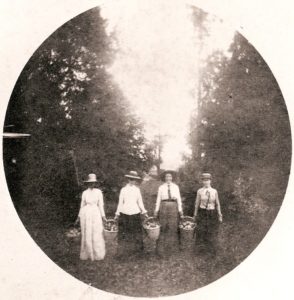
Ladies at the orchard
Behind the horse barn (short walk from the back of the house) pasture is a hill called Cherry Hill. It was here James Dinsmore had workers plant a large orchard filled with a variety of apple, pear, cherrie, plum, and peach trees. By 1880, there were over 1,000 apple trees and 100 peach trees. On the hillside by the horse barn (short walk behind the house), he created a park-like atmosphere, by allowing all the old-growth trees to remain & getting rid of the scrub trees. He then planted orchard grass & pastured his 150 angora goats & cashmere sheep there.
Stock
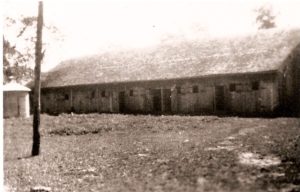
Sheep barn (only the foundation remains today)
At the time of his death, in 1872, James owned 34 sheep and 43 goats. The sheep produced about 200-400 pounds of wool each year. On Cherry Hill, he planted orchard grass and pastured his 150 angora goats & cashmere sheep there.
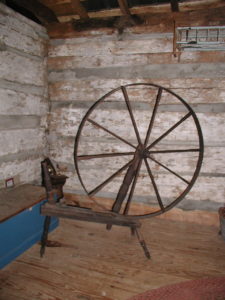
Spinning wheel in Cook Cabin
A little south of the tobacco barn (still standing across the road from the house) was a large sheep barn which measured about 60 feet by 100 feet (stone foundation still visible).
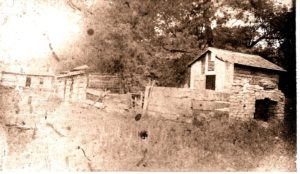
View of hog pen and slave cabins (no longer existing)
Hogs were also raised on the property for their meat. The tenants/sharecroppers and enslaved people on the farm slaughtered hogs every winter to make sausage, ham and bacon for the coming year. In the late nineteenth century, Patty Selmes ran a ham business from the farm with a friend from Cincinnati.
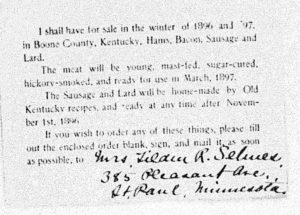
Patty's hog business posting.
They sent hams to the Burnet House in Cincinnati and as far away as the White House when Theodore Roosevelt was President.
Cattle were raised for their meat, hide, milk, and butter.
Horses and oxen were used to work in the land. Julia Dinsmore also rode horses for pleasure but also to “boss the tenants,” as she put it. Not being a very trusting manager, she often checked up on the men who worked for her to make sure they were doing what she had asked them to do.
There were always chickens and turkeys on the farm.
Baskets
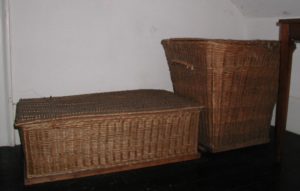
In the 1850s, James Dinsmore brought German immigrants to Boone County from Cincinnati. Cabins were built on the land to house the basket makers. A basket shop was built down the hill from the tobacco barn, on the banks of Middle Creek. (The Tobacco barn still stands today immediately across the road from the house, but the basket barn is gone.) The workers planted osier willows which made for strong baskets. The finished baskets were shipped by steamboat to Pittsburgh, Louisville, St. Louis, and New Orleans where they were sold as market and clothes baskets. Julia did not care to deal with the basket business and ordered the willows to be uprooted.
Wine
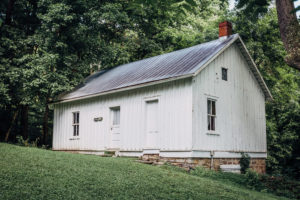
Wine house situated behind the main house.
The sandy soil of the land made it suitable for grapes and James Dinsmore was extremely interested in trying his hand at making his own wine. He cultivated four acres of grapes on the hillside below the graveyard. He raised Catawba and Isabella grapes, like Nicholas Longworth in Cincinnati. Although he sold thousands of vine cuttings each year, he used the grapes to make his own wine. James liked to send his wine to friends and relatives, ask for their feedback, then adjust his recipe accordingly. Originally, he probably had the wine and cider made in the cellar below the kitchen. In 1870, he hired some local men to construct a Wine House, located behind the main house and up the hill toward the graveyard. Documents tell us that the wine house cost $777.66 to build. At the time of his death James had eight barrels of wine and six barrels of cider left over.
